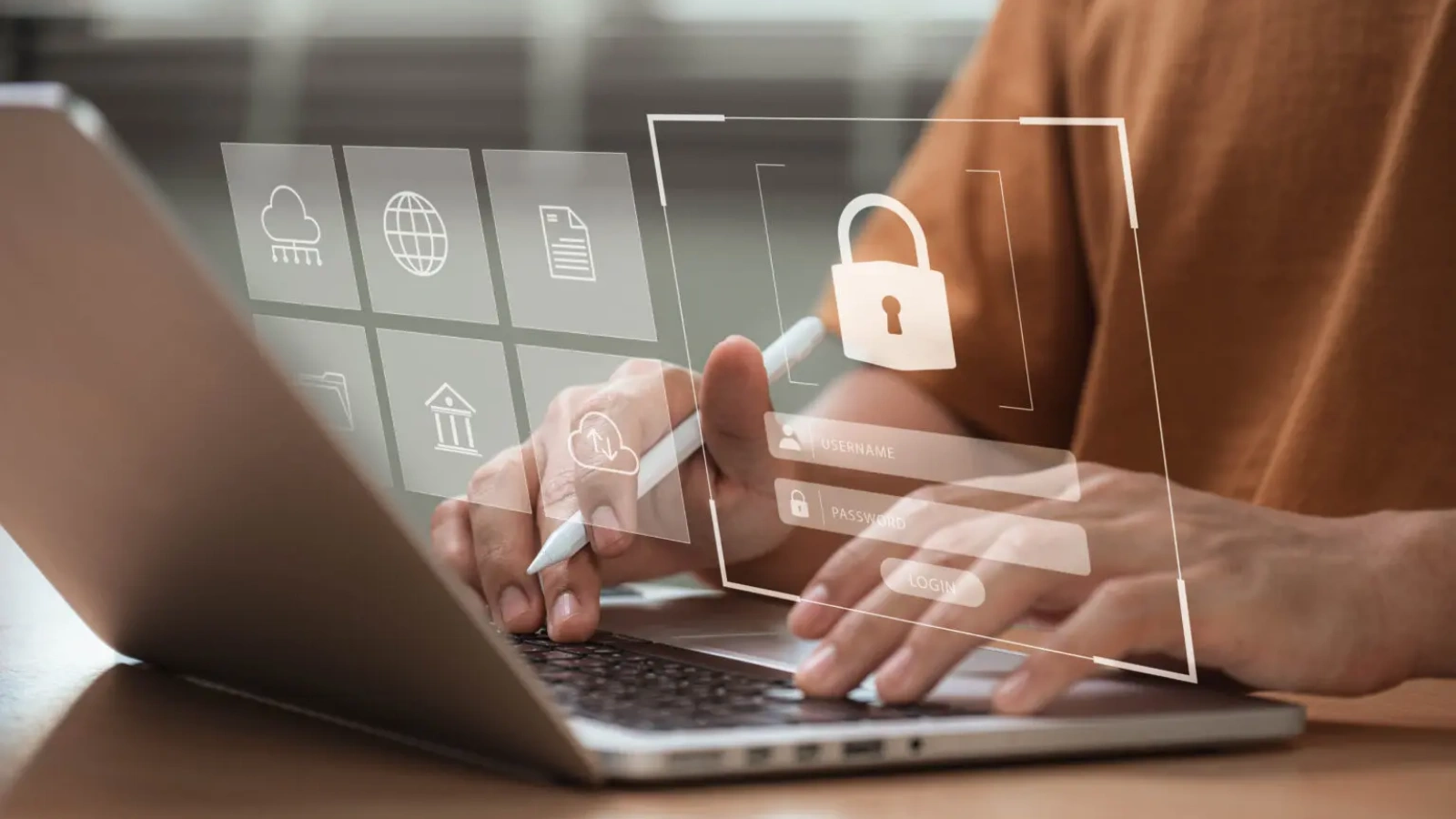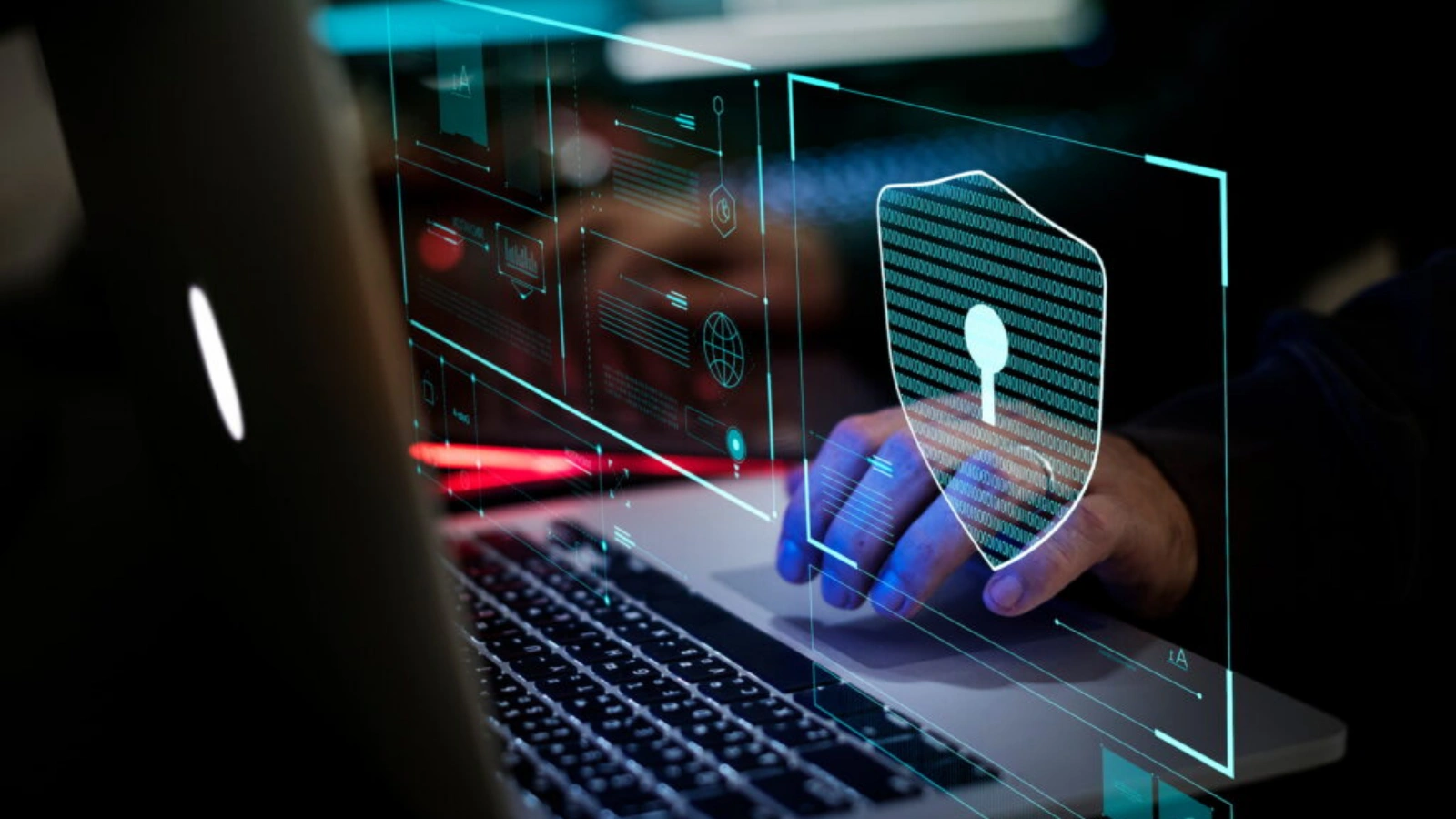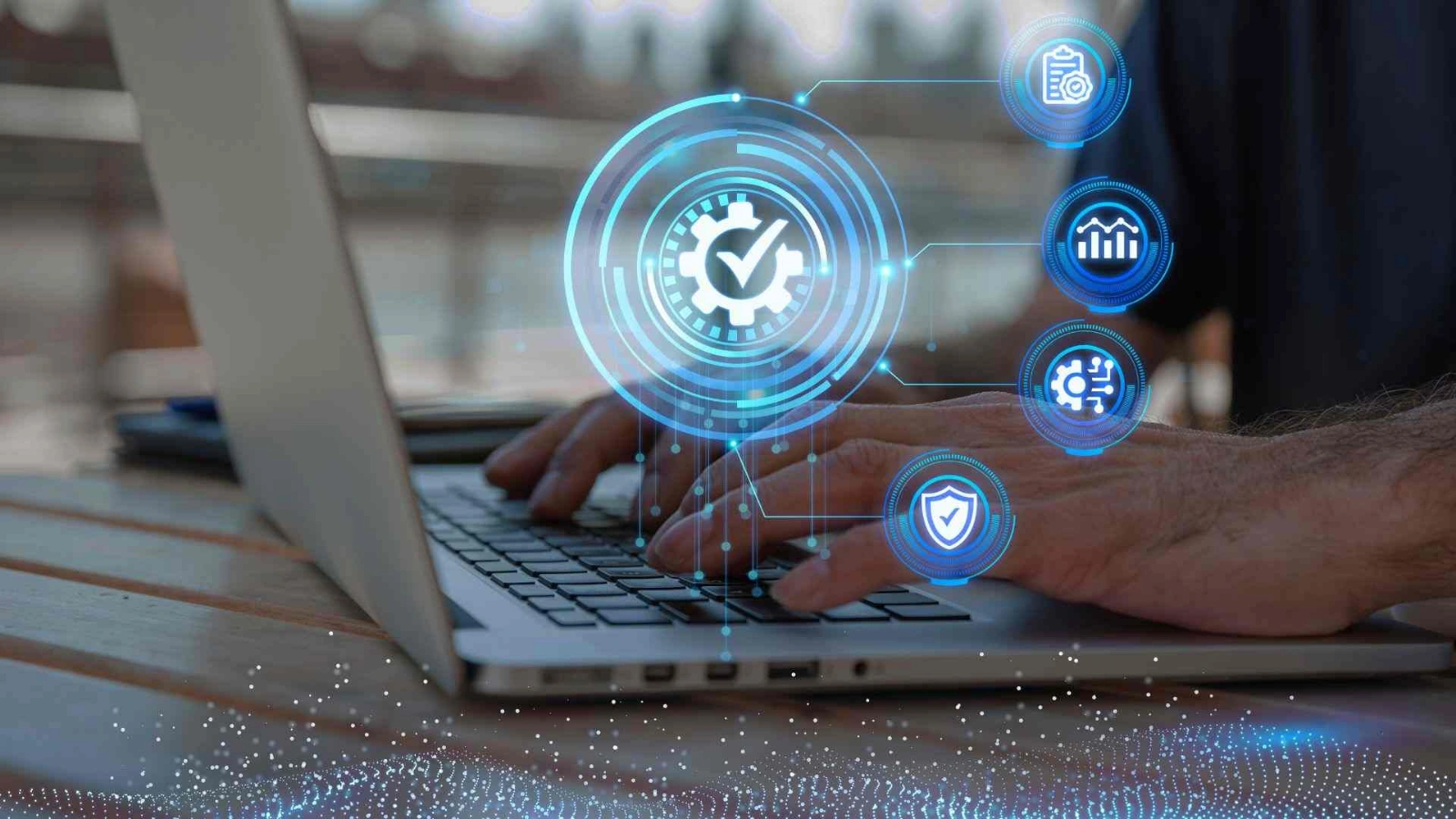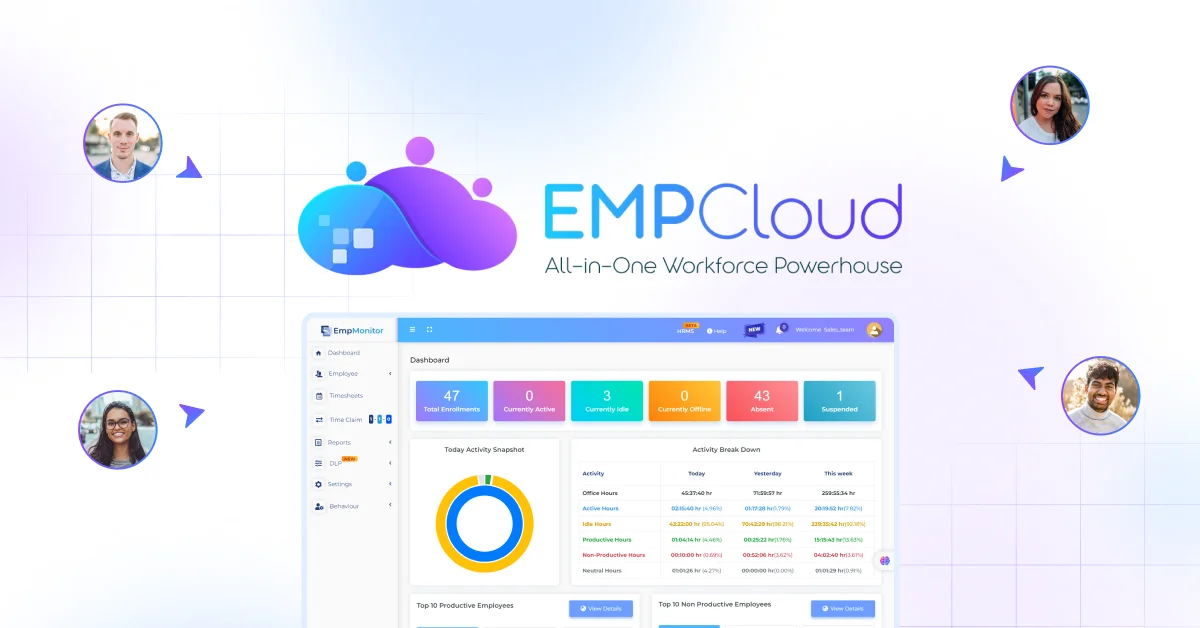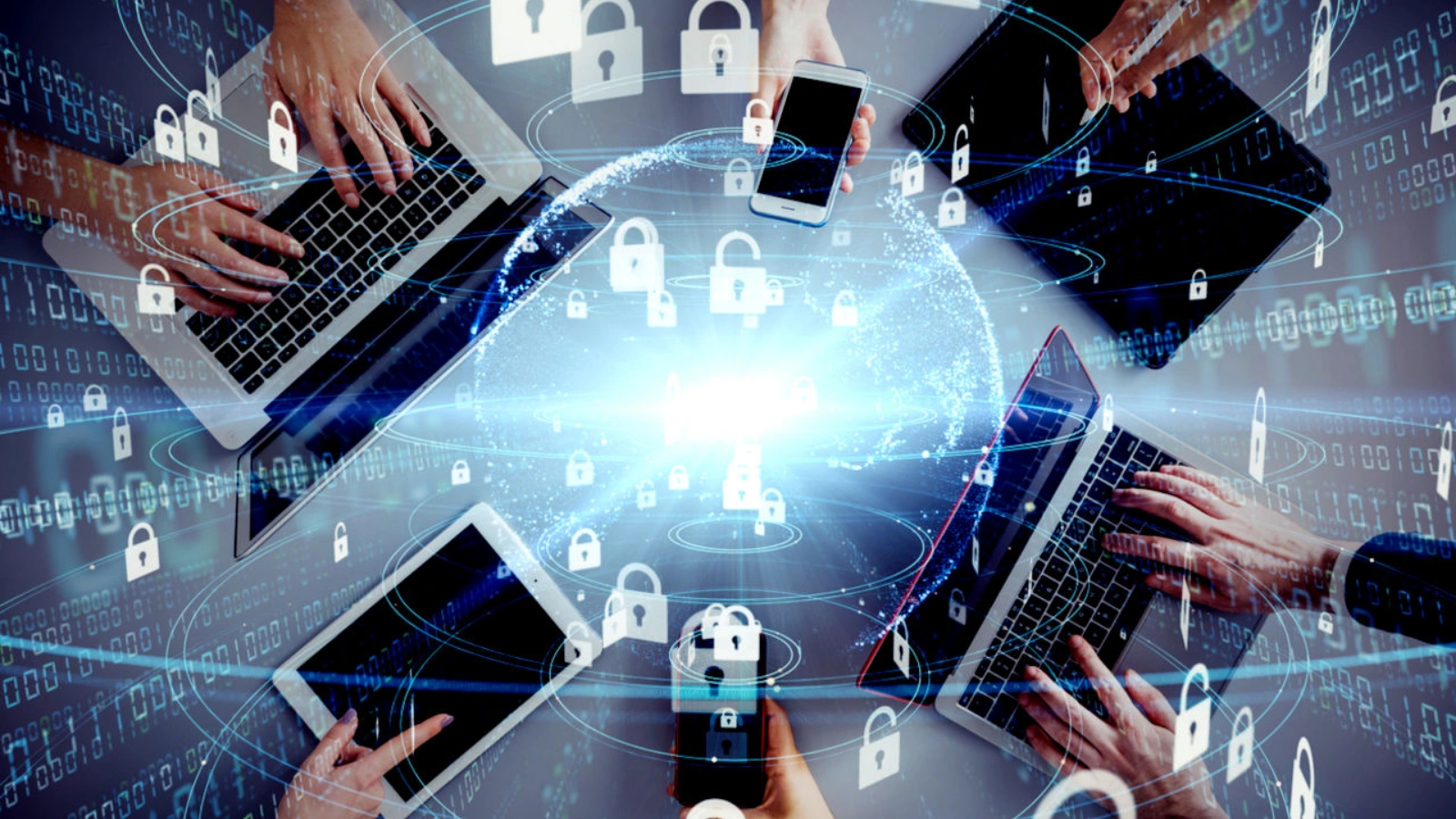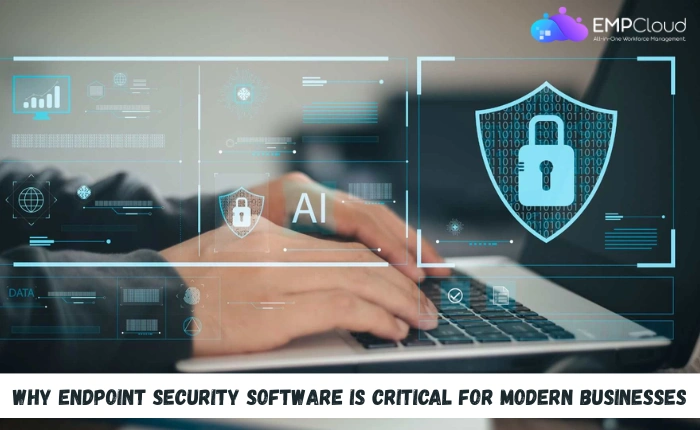
Cyber threats are evolving faster than ever, and keeping up with them can feel like a full-time job. Whether you run a startup or a global enterprise, your network is constantly under attack. That’s why endpoint security software has become one of the most essential components of a modern cybersecurity strategy.
This powerful technology safeguards every connected device, including laptops, desktops, mobile phones, and servers, ensuring your business stays secure against both known and unknown cyber risks.
In this comprehensive guide, we’ll explore how endpoint security software works, why it’s crucial, its major benefits, and how to choose the best solution for your organization.
Hit ‘Play’ Button & Tune Into The Blog!
What Is Endpoint Security?
Endpoint security software is designed to protect endpoints, any device connected to your network, from malware, ransomware, phishing, and other cyber threats.
Think of it as the first line of defense between your organization and malicious hackers. It monitors, detects, and blocks suspicious activity in real time, preventing breaches before they escalate into costly incidents.
Why Endpoints Are The Weakest Link?
Even with strong network security, endpoints often remain the most vulnerable part of any organization. Employees use multiple devices, connect from different locations, and sometimes unintentionally expose networks to risks.
This decentralized structure gives hackers more opportunities to infiltrate systems. Without endpoint security software, even a single compromised device can lead to a full-scale data breach.
That’s why organizations now prioritize endpoint security as much as network security.
How Endpoint Security Software Works?
Endpoint security software combines advanced technologies like threat detection, behavioral analysis, and real-time monitoring to safeguard devices and data. Here’s how it typically functions:
Continuous Monitoring:
The software continuously observes all endpoints, such as laptops, smartphones, and servers, looking for unusual patterns or suspicious activity. By tracking IOC cybersecurity signals, it can detect early signs of compromise before they escalate.
Threat Detection:
When a potential threat is identified, the system analyzes it using techniques like signature-based detection, machine learning, or behavioral analysis. It then classifies the risk according to severity and type, helping prioritize responses.
Immediate Response:
Once a threat is confirmed, the software can automatically block, isolate, or remove it to prevent damage. This swift action minimizes downtime and protects sensitive data from being compromised.
Reporting and Alerts:
Administrators receive detailed alerts and reports on detected threats, attempted breaches, and system vulnerabilities. These insights enable faster, smarter decision-making and strengthen overall security strategies.
This layered approach helps protect against both external and internal threats.
Also Read:
How To Master IOC Cybersecurity For Stronger Threat Defense?
What Are The Common Cyber Threats Targeting Endpoints?
To understand why endpoint security software is essential, let’s look at the most common types of attacks:
Malware and Ransomware:
Malicious software designed to steal sensitive data, disrupt normal operations, or encrypt critical files until a ransom is paid. These attacks can lead to financial loss, downtime, and reputational damage.
Phishing Attacks:
Deceptive emails, messages, or fake websites that trick employees into revealing login credentials, financial information, or other confidential data. Phishing often relies on social engineering to appear legitimate.
Zero-Day Exploits:
Attacks targeting unknown or unpatched software vulnerabilities. Since developers haven’t yet released a fix, these exploits can bypass traditional security measures and cause severe damage quickly.
Insider Threats:
Employees, contractors, or partners who accidentally or intentionally compromise security. This could include sharing sensitive data, installing unauthorized software, or exposing vulnerabilities within the organization.
Fileless Attacks:
Advanced threats that run entirely in system memory without leaving files on the hard drive. These attacks are stealthy, difficult to detect, and can bypass traditional antivirus programs.
A robust endpoint security solution is designed to defend against all these evolving threats through continuous monitoring, advanced detection, and immediate response, ensuring devices and sensitive data remain secure.
Key Features Of Endpoint Security Software
Modern endpoint security software offers a comprehensive set of features to protect organizations from evolving cyber threats. Some of the most important include:
Real-Time Threat Detection – Continuously monitors devices and networks for unusual activity or potential attacks, providing instant alerts so threats can be addressed immediately.
Advanced Malware Protection – Blocks a wide range of malicious software, including viruses, trojans, spyware, ransomware, and other harmful programs before they can cause damage.
Centralized Management Console – Provides IT teams with a single interface to manage security settings, monitor device status, and respond to incidents across all endpoints efficiently.
Automatic Updates – Ensures that all devices and security software are up-to-date with the latest patches and threat definitions, minimizing vulnerability to new attacks.
Data Encryption – Protects sensitive information stored on devices by encrypting it, ensuring that even if a device is lost or stolen, the data remains secure.
Behavioral Analysis – Uses AI and machine learning to detect abnormal user and system behavior, identifying new or unknown threats that traditional antivirus software might miss.
Policy Enforcement – Helps organizations implement and enforce security policies consistently across all devices, ensuring compliance with internal standards and industry regulations.
A robust endpoint security solution combines these features to provide proactive, comprehensive protection against both external and internal threats.
What Is The Role Of Endpoint Security In Remote Work?
The shift to remote and hybrid work has made endpoint security software more important than ever. Employees access company networks from different locations, sometimes using personal devices.
Without strong endpoint protection, this creates multiple security gaps. A single unprotected laptop can give hackers an entry point.
Robust security solutions help IT teams secure remote endpoints, apply consistent security policies, and detect threats before they cause damage.
As organizations embrace hybrid and remote work, securing endpoints isn’t just about firewalls and malware detection, it’s also about having complete visibility into how teams work. This is where smart management tools like EmpCloud can complement your endpoint security software strategy.
EmpCloud gives businesses unified control over workforce activities, helping ensure secure access, track employee movements through geo-location tracking, and prevent data leaks with integrated security measures. By combining strong endpoint protection with remote work software and workforce intelligence, organizations can build a more secure and transparent digital environment.
How AI And Machine Learning Strengthen Endpoint Protection?
Modern endpoint security software uses artificial intelligence (AI) and machine learning (ML) to detect and respond to threats more effectively. These technologies analyze large volumes of data, identify patterns, and flag anomalies in real time, adapting automatically to new and evolving attacks.
AI and ML also help predict potential risks before they escalate and reduce false alarms by learning from past incidents. This allows IT teams to focus on real threats and respond faster, improving overall security efficiency.
Another key advantage is seamless integration with other cybersecurity tools like firewalls, SIEM systems, and identity management platforms. This creates a unified security ecosystem where all layers of defense work together to protect the organization.
Centralized dashboards consolidate alerts and insights from multiple systems, making it easier for security teams to monitor incidents, investigate anomalies, and take action quickly, ensuring consistent protection across all devices.
What Are The Best Practices For Implementing Endpoint Security?
To maximize the effectiveness of endpoint security software, organizations should follow these best practices:
- Create a Strong Security Policy: Clearly define rules for device usage and access.
- Keep Software Updated: Regular updates patch vulnerabilities.
- Train Employees: Security awareness reduces human errors.
- Use Multi-Factor Authentication (MFA): Adds an extra layer of security.
- Encrypt Data: Protect sensitive information even if devices are compromised.
- Segment Networks: Reduce the impact of potential breaches.
- Monitor and Respond: Continuous monitoring ensures faster detection and action.
Also Read:
20 Ways Remote Work Software Can Boost Team Productivity
How Can EmpCloud Enhance Your Endpoint Security And Workforce Management?
In today’s digital workplaces, securing endpoints goes beyond antivirus and firewalls; it also involves monitoring workforce activity and ensuring compliance. That’s where EmpCloud comes in. By combining powerful endpoint security software with intelligent workforce management, EmpCloud helps businesses safeguard data while optimizing employee performance.
Trusted by over 1500+ industry leaders, EmpCloud is designed to provide complete operational visibility without compromising security.
Key Features That Strengthen Endpoint Security And Productivity:
- Geo-Location Tracking: Monitor field teams in real time to ensure secure and compliant operations. Managers can verify employee locations during work hours, optimize routes, and prevent unauthorized access.
- Data Loss Prevention: Protect sensitive company information with advanced security measures, including restricted access to critical files, encryption, and controlled sharing.
- Productivity Tracking: Gain actionable insights into employee performance, identify bottlenecks, track task completion, and detect anomalies or unusual activity that could indicate potential security risks.
- Face Recognition Attendance: Ensure secure workplace access with contactless and accurate attendance, reducing the chances of proxy attendance while maintaining hygiene standards.
- Centralized Dashboard: Access comprehensive insights into attendance, task allocation, timesheets, employee access history, and project progress—all from a single platform for faster decision-making.
- Automated Timesheets & Access History: Maintain precise records of employee hours, work patterns, and access logs to support audits, compliance, and operational efficiency.
- Policy & Document Management: Safely store, manage, and distribute critical company policies and documents, ensuring employees have the latest guidelines while maintaining secure access controls.
By integrating EmpCloud with endpoint security software, organizations gain a dual advantage, robust digital defense paired with full workforce visibility. This layered approach reduces security risks, strengthens compliance, and ensures that no endpoint or activity becomes a blind spot.
Why Endpoint Protection Is An Ongoing Process?
Securing endpoints isn’t a one-time task, it’s an ongoing effort. Every device connected to your network, from laptops to mobile devices, can be a potential entry point for cyber threats. Hackers constantly develop new malware, ransomware, and phishing techniques, so your endpoint security software must stay updated and adaptive.
Maintaining strong protection requires continuous monitoring, regular security assessments, and timely patch management. Employee training is equally important, as human error is a common cause of breaches. By treating endpoint protection as an ongoing process, businesses can reduce risks, prevent downtime, and ensure data security across all devices.
How Managed Security Services Can Help?
Many organizations, especially small and medium-sized businesses, may lack the in-house resources or expertise to manage cybersecurity effectively. In such cases, partnering with a trusted endpoint protection service can be a strategic solution.
Managed security services offer expert monitoring, proactive threat detection, and rapid incident response, ensuring that your endpoints remain secure around the clock. These services also help implement best practices, maintain software updates, and manage compliance requirements, reducing the burden on internal IT teams. By leveraging external expertise, organizations can focus on core operations while maintaining a strong, reliable security posture against evolving cyber threats.
Why Should Businesses Consider An Endpoint Security Suite For Complete Protection?
Many organizations prefer an endpoint protection suite because it combines multiple security features into a single platform, simplifying management and ensuring comprehensive protection. These suites provide integrated monitoring, advanced threat detection, and coverage for all endpoints, reducing security gaps and improving efficiency.
Platforms like EmpCloud complement endpoint security suites by adding workforce monitoring, data protection, and centralized dashboards, giving organizations both device security and operational visibility. Together, they provide a complete, streamlined approach to safeguarding digital workplaces.
By using an endpoint protection suite alongside tools like EmpCloud, businesses can also enhance compliance, track employee activity securely, and quickly respond to potential threats. This combination ensures that both technical vulnerabilities and operational risks are addressed, creating a stronger, more resilient security posture.
The Future Of Endpoint Security Software?
As technology continues to evolve, endpoint security software will become even more advanced, adaptive, and intelligent. Future solutions are expected to go beyond traditional threat detection, incorporating proactive features that anticipate and neutralize risks before they impact the organization. Key trends include:
- Deeper AI Integration: Artificial intelligence will enable automated threat hunting, predictive analysis, and faster response to emerging attacks, reducing reliance on manual monitoring.
- Zero Trust Architecture: Security models will operate on the principle that no device, user, or connection is trusted by default, requiring continuous verification to prevent breaches.
- Improved Cloud Security: With hybrid work environments becoming the norm, endpoint security will increasingly focus on protecting cloud-based applications, remote devices, and hybrid networks.
- Faster Incident Response: Real-time analytics and threat intelligence will allow security teams to detect, isolate, and remediate threats within minutes, minimizing potential damage.
- User Behavior Analytics: Advanced monitoring tools will analyze user activity patterns to detect insider threats, unauthorized access, or suspicious behavior before serious incidents occur.
Organizations that adopt these modern endpoint security solutions early will not only protect their systems more effectively but also stay resilient against increasingly sophisticated cyber threats.
Conclusion
In the modern digital era, the question isn’t whether your organization will face cyber threats, it’s when. A single breach can cause devastating consequences, from financial losses to reputational harm.
That’s why investing in endpoint security software is no longer optional; it’s essential. It provides real-time protection, centralized control, and advanced defense mechanisms to secure your endpoints and safeguard your data.
By choosing the right solution, integrating powerful tools like EmpCloud, and following best practices, you can build a resilient cybersecurity framework capable of withstanding even the most advanced attacks.
Endpoint security is the foundation of a secure digital future, make sure your organization is protected.
Frequently Asked Questions
1. What is endpoint protection software?
This is a comprehensive security solution that defends connected devices against cyber threats, ensuring that no endpoint becomes a weak link in your security posture.
2. How does endpoint protection software differ from antivirus?
While antivirus only targets known malware, endpoint protection offers broader coverage against multiple types of threats and includes advanced features like behavioral analysis and real-time monitoring.
3. Is endpoint security necessary for small businesses?
Yes, small businesses are frequent targets of cyberattacks. Endpoint protection ensures even smaller organizations can maintain strong defenses.

